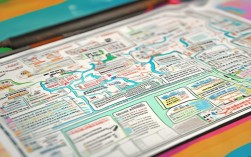
English Mind Map: April Fools' Day
Central Idea (中心主题): April Fools' Day (愚人节)
Core Concept (核心概念)
- What is it? (是什么?)
- A non-traditional holiday.
- A day for playing pranks and jokes on people.
- Also known as All Fools' Day.
- When is it? (何时?)
- Date: April 1st (每年4月1日).
- Time: From the moment it begins (midnight) until noon. (传统上,玩笑只限于中午12点之前).
- Why? (为什么?)
- No single, universally agreed-upon origin.
- Theories: Calendar change (Julian to Gregorian), Hilaria festival (ancient Rome), or simply a folk tradition.
Key Vocabulary (核心词汇)
- Nouns (名词):
- Prank / Joke: 恶作剧,玩笑 (e.g., a harmless prank).
- Trick: 把戏,诡计 (e.g., to play a trick on someone).
- Hoax: 骗局,骗局 (often more elaborate and public).
- Victim / Target: 受害者,目标对象.
- Laughter / Giggles: 笑声.
- Gullible: 易上当受骗的 (describes a person).
- Pun: 双关语 (a type of verbal joke).
- Verbs (动词):
- To trick / To fool: 愚弄,欺骗.
- To prank: 搁...的恶作剧.
- To hoax: 欺骗,设骗局.
- To pull a prank on someone: 对某人搞恶作剧.
- To fall for it / To be taken in: 上当,受骗.
- To laugh it off: 一笑置之,把事情当作笑料.
- Adjectives (形容词):
- Funny / Hilarious: 有趣的,极其搞笑的.
- Clever / Creative: 聪明的,有创意的.
- Innocuous / Harmless: 无害的.
- Embarrassing: 令人尴尬的.
- Elaborate: 精心策划的.
- Classic: 经典的.
Common Pranks (常见恶作剧)
- Classic Classics (经典传统类):
- The "kick me" sign: 在别人背后贴上“踢我”的纸条.
- Faking a phone call: 假装有电话,然后说“April Fools!”.
- Pointing at someone's shirt and saying, "You've got a spider!" 指着别人的衣服说:“你衣服上有只蜘蛛!”
- Food & Drink (食物饮料类):
- Food coloring in milk: 在牛奶里滴入食用色素.
- Fake bugs in food/ice: 在食物或冰块里放假虫子.
- Salty cookies/sweet omelets: 做成咸味的饼干或甜味的煎蛋.
- Tech & Media (科技媒体类):
- Fake computer virus alert: 弹出假的电脑病毒警告.
- Changing someone's phone language: 把别人手机的语言改成看不懂的.
- Fake news articles: 发布虚假的新闻报道 (e.g., a famous brand announcing a ridiculous new product).
- Office/School (办公室/学校类):
- Stapled papers: 把很多张纸用订书机订在一起,假装是一份文件.
- Fake meeting announcements: 发布虚假的会议通知.
- Whoopee cushion: 放一个放屁坐垫在别人椅子上.
Famous Examples (著名案例)
- The Spaghetti Harvest (1957): BBC 播报了一则瑞士农民从树上“收获”意大利面的新闻,许多人信以为真.
- Taco Bell Buys the Liberty Bell (1996): 塔可贝尔宣布收购美国自由钟,并将其改名为“塔可贝尔自由钟”.
- Google's "Gmail Motion" (2011): 谷歌推出可以通过身体动作控制邮件的“Gmail Motion”功能,实则是愚人节玩笑.
- The Left-Handed Whopper (1998): 汉堡王宣布推出“左旋汉堡”,所有配料都旋转180度,专门为左撇子设计.
Etiquette & Culture (礼仪与文化)
- The Golden Rule (黄金法则):
- Keep it harmless and fun. (保持无害和有趣).
- Avoid jokes that could cause real fear, embarrassment, or danger. (避免引起真正恐惧、尴尬或危险的玩笑).
- The Reveal (揭秘时刻):
- Always say "April Fools!" at the end.
- The goal is to share a laugh, not to trick someone permanently.
- Cultural Context (文化背景):
- It's generally not celebrated in some countries or cultures where pranks are not well-received.
- In recent years, there's been a trend towards more "wholesome" or silly pranks rather than mean-spirited ones.
Useful Phrases (实用句型)
- To play a prank:
- "I'm going to play a prank on my brother."
- "Let's pull a prank on our teacher."
- To react to a prank:
- (When you trick someone) "April Fools! Gotcha!"
- (When you are tricked) "Oh, you got me! That's hilarious!"
- (When you see a funny prank) "That's hilarious! Well done!"
- To describe a prank:
- "That was a clever prank."
- "It was a bit embarrassing, but funny."
- "Don't worry, it was a harmless joke."











